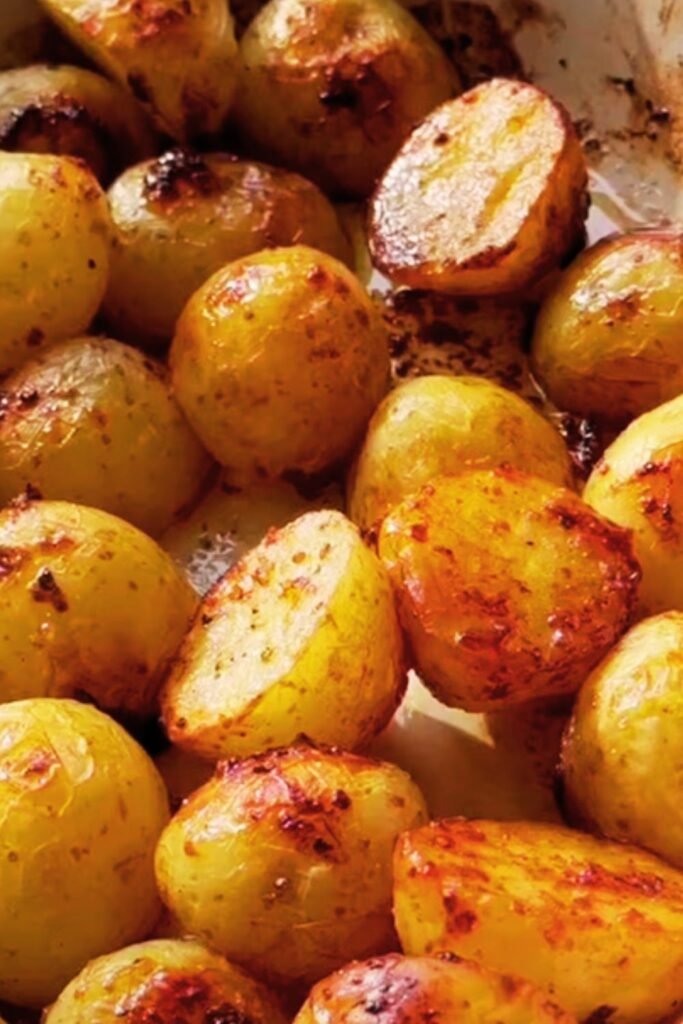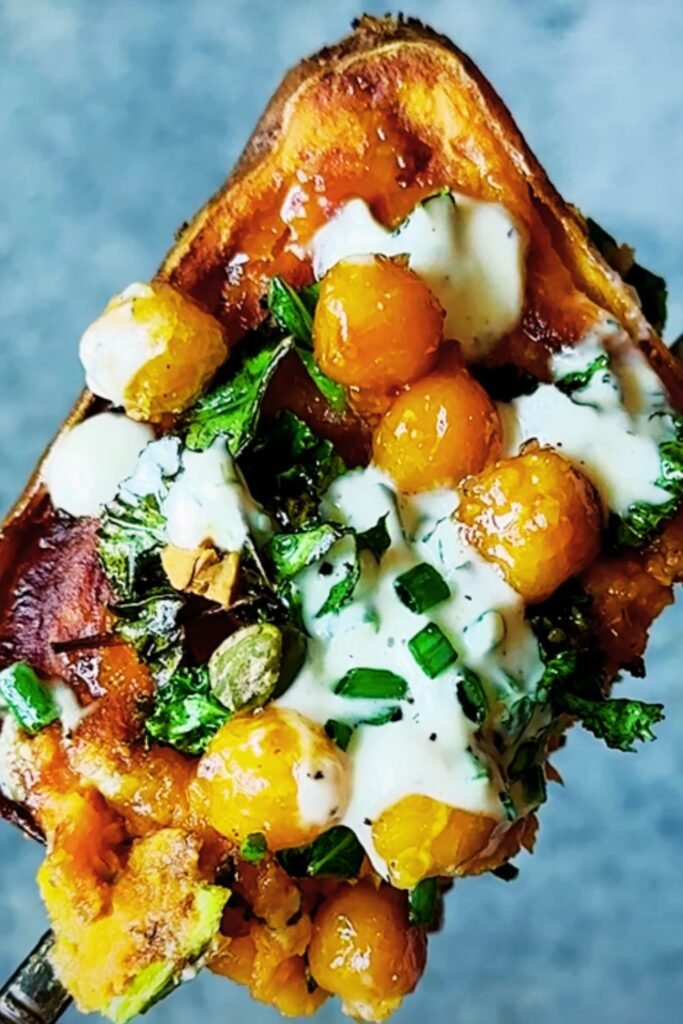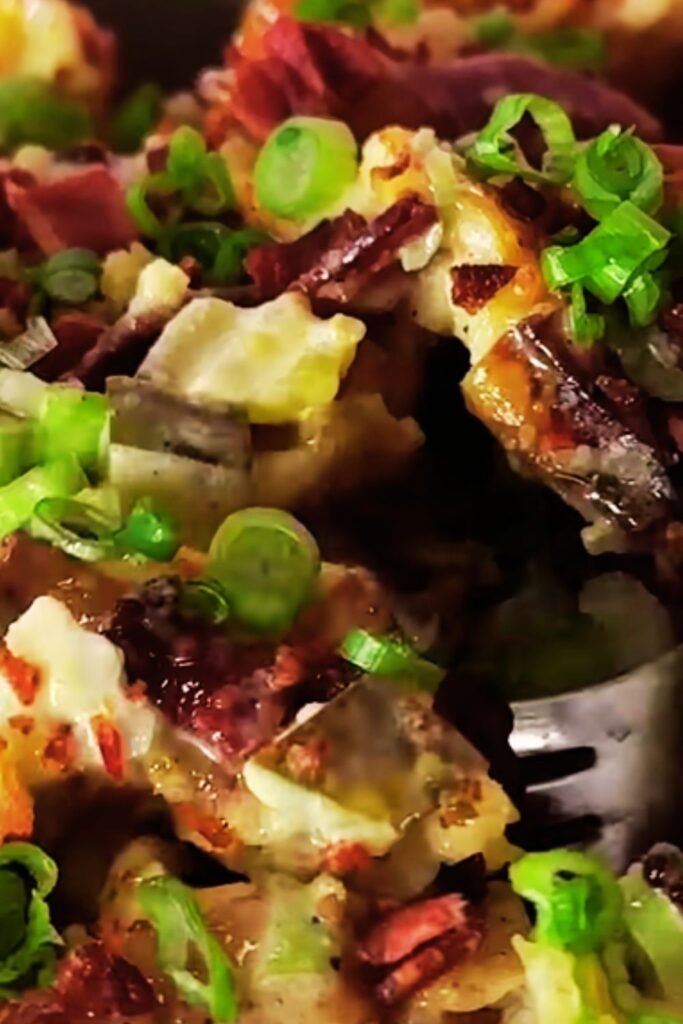I’ve been experimenting with potato recipes for years, and let me tell you, honey mustard potatoes have become my absolute favorite side dish. There’s something magical about the way the sweet honey mingles with the sharp mustard, creating a glaze that transforms ordinary potatoes into something extraordinary. Whether you’re hosting a dinner party or just looking to elevate your weeknight meal, this recipe delivers both comfort and sophistication.
The beauty of honey mustard potatoes lies in their versatility. I’ve served them alongside grilled chicken, roasted beef, and even as a vegetarian main course with a fresh salad. The combination of crispy edges and tender centers, all coated in that glossy honey mustard glaze, never fails to impress my guests and family.
Understanding the Perfect Honey Mustard Balance
Creating the ideal honey mustard coating isn’t just about mixing two ingredients together. I’ve learned through countless trials that the ratio matters immensely. Too much honey, and you’ll end up with overly sweet potatoes that lack complexity. Too much mustard, and the sharpness can overpower the natural earthiness of the potatoes.
Key Components:
- Honey: Provides natural sweetness and helps create that beautiful caramelized exterior
- Dijon Mustard: Adds sophistication with its wine-forward tanginess
- Whole Grain Mustard: Contributes texture and visual appeal with those lovely mustard seeds
- Yellow Mustard: Brings classic American comfort food vibes
The science behind this combination fascinates me. Honey contains natural sugars that caramelize at high temperatures, creating those coveted crispy edges. Meanwhile, the acidity in mustard helps break down the potato’s surface slightly, allowing the flavors to penetrate deeper than a simple coating would achieve.
Essential Ingredients and Their Roles
When I first started making honey mustard potatoes, I thought any potato would work. I was wrong. The type of potato you choose dramatically affects the final result, and I’ve tested virtually every variety available at my local market.
Potato Varieties Comparison
| Potato Type | Starch Content | Best Use | Texture Result | My Rating |
|---|---|---|---|---|
| Russet | High | Baking, frying | Fluffy interior, crispy skin | 4/5 |
| Yukon Gold | Medium | All-purpose | Creamy, holds shape well | 5/5 |
| Red Potatoes | Low | Boiling, roasting | Firm, waxy texture | 3/5 |
| Fingerlings | Medium-Low | Roasting | Unique shape, firm bite | 4/5 |
| Purple Potatoes | Medium | Specialty dishes | Striking color, nutty flavor | 4/5 |
My personal favorite for honey mustard potatoes is Yukon Gold. These golden beauties have the perfect balance of starch and moisture, creating a creamy interior that contrasts beautifully with the caramelized exterior. They hold their shape well during roasting and have a naturally buttery flavor that complements the honey mustard glaze.
The Complete Ingredient List
For the Potatoes:
- 2 pounds Yukon Gold potatoes, cut into 1-inch cubes
- 3 tablespoons olive oil
- 1 teaspoon salt
- ½ teaspoon freshly ground black pepper
For the Honey Mustard Glaze:
- ¼ cup honey (I prefer wildflower or clover honey)
- 3 tablespoons Dijon mustard
- 2 tablespoons whole grain mustard
- 1 tablespoon apple cider vinegar
- 2 cloves garlic, minced
- 1 tablespoon fresh thyme leaves
- ½ teaspoon smoked paprika
- ¼ teaspoon cayenne pepper (optional, for heat)

Step-by-Step Preparation Method
I’ve refined this technique through years of practice, and I can confidently say this method produces consistently excellent results every time.
Preparation Phase
- Preheat your oven to 425°F (220°C). This high temperature is crucial for achieving those crispy edges I love so much.
- Prepare the potatoes by washing them thoroughly and cutting into uniform 1-inch cubes. I leave the skin on because it adds texture and nutrition, plus it saves time.
- Soak the cut potatoes in cold water for 15 minutes. This removes excess starch and helps achieve crispier results.
The Roasting Process
- Drain and dry the potatoes completely using paper towels or a clean kitchen towel. Moisture is the enemy of crispiness.
- Toss with oil and seasonings in a large bowl. I make sure every piece is evenly coated.
- Arrange on a baking sheet in a single layer. Overcrowding leads to steaming instead of roasting, which I learned the hard way.
- Roast for 25 minutes without disturbing them. Patience is key here.
Creating the Perfect Glaze
While the potatoes roast, I prepare the honey mustard glaze. In a small bowl, I whisk together:
- Combine the honey and mustards first, ensuring they’re well blended.
- Add the vinegar and garlic, whisking continuously to prevent separation.
- Incorporate the herbs and spices, creating a fragrant, complex glaze.
The Final Assembly
- Remove potatoes from oven after 25 minutes. They should be golden and starting to crisp.
- Brush with glaze using a pastry brush, ensuring even coverage.
- Return to oven for 10-15 minutes until the glaze caramelizes and the potatoes are fork-tender.

Mastering the Cooking Techniques
The difference between good honey mustard potatoes and exceptional ones lies in the details. I’ve discovered several techniques that elevate this dish from ordinary to restaurant-quality.
Temperature Control
Maintaining the right oven temperature is crucial. I always use an oven thermometer because I’ve found that many home ovens run hot or cold. At 425°F, the potatoes develop that perfect contrast between the crispy exterior and fluffy interior.
Timing the Glaze Application
Adding the glaze too early results in burning, while adding it too late doesn’t allow proper caramelization. I’ve found that applying the glaze during the last 10-15 minutes of cooking creates the perfect balance.
The Two-Stage Roasting Method
My technique involves two distinct phases:
- First stage: High heat roasting to develop the potato’s natural sugars and create initial crispiness
- Second stage: Glaze application and final caramelization to build those complex flavors
Nutritional Benefits and Health Considerations
I appreciate that honey mustard potatoes offer more than just incredible flavor. Potatoes are often misunderstood from a nutritional standpoint, but they’re actually quite healthy when prepared properly.
Nutritional Breakdown (Per Serving)
| Nutrient | Amount | % Daily Value | Health Benefits |
|---|---|---|---|
| Calories | 245 | 12% | Sustained energy |
| Carbohydrates | 42g | 14% | Brain fuel |
| Fiber | 4g | 16% | Digestive health |
| Protein | 5g | 10% | Muscle maintenance |
| Potassium | 620mg | 18% | Heart health |
| Vitamin C | 28mg | 31% | Immune support |
| Vitamin B6 | 0.4mg | 24% | Brain function |
| Iron | 1.8mg | 10% | Oxygen transport |
The honey provides natural antioxidants and trace minerals, while mustard seeds contribute selenium and magnesium. I feel good about serving this dish because it’s both indulgent and nutritious.
Serving Suggestions and Pairings
Over the years, I’ve discovered that honey mustard potatoes complement a wide variety of main courses. Their sweet and tangy profile makes them incredibly versatile.
Perfect Protein Pairings
Poultry Options:
- Herb-roasted chicken thighs
- Grilled chicken breast with rosemary
- Turkey meatloaf with sage
Beef Combinations:
- Pan-seared steak with garlic
- Slow-cooked pot roast
- Grilled hamburgers for casual dining
Pork Selections:
- Honey-glazed ham (the flavors echo beautifully)
- Pork tenderloin with herbs
- Bacon-wrapped pork chops
Vegetarian Options:
- Grilled portobello mushrooms
- Quinoa-stuffed bell peppers
- Lentil and vegetable curry
Seasonal Menu Ideas
Spring Menu: I love serving these potatoes with fresh asparagus and grilled salmon. The bright flavors complement the season’s renewal.
Summer Barbecue: They’re perfect alongside grilled corn and barbecued chicken. The honey mustard glaze holds up beautifully to bold barbecue flavors.
Fall Comfort: Paired with roasted Brussels sprouts and turkey, they create the perfect autumn dinner.
Winter Warmth: With braised short ribs and roasted root vegetables, they add brightness to hearty winter meals.

Storage and Reheating Tips
I’m often asked about making these potatoes ahead of time, especially for entertaining. While they’re best served fresh, I’ve developed reliable methods for storage and reheating.
Storage Guidelines
Refrigerator Storage:
- Store in airtight containers for up to 4 days
- Keep the glaze separately if preparing components ahead
- Allow to cool completely before refrigerating
Freezer Storage:
- Freeze unglazed roasted potatoes for up to 3 months
- Add glaze after reheating for best texture
- Use freezer-safe containers or bags
Reheating Methods
Oven Method (My Preference):
- Preheat oven to 400°F
- Spread potatoes on baking sheet
- Heat for 10-12 minutes until warmed through
- Brush with fresh glaze if needed
Skillet Method:
- Heat a large skillet over medium heat
- Add a small amount of oil
- Reheat potatoes, stirring occasionally
- Takes about 8-10 minutes
Troubleshooting Common Issues
Through years of making this recipe, I’ve encountered and solved virtually every problem you might face.
Problem: Potatoes Won’t Crisp
Solutions:
- Ensure potatoes are completely dry before oiling
- Don’t overcrowd the baking sheet
- Use enough oil to coat evenly
- Check oven temperature accuracy
Problem: Glaze Burns
Solutions:
- Apply glaze later in cooking process
- Lower oven temperature to 400°F if needed
- Cover with foil if browning too quickly
- Use a timer to prevent overcooking
Problem: Uneven Cooking
Solutions:
- Cut potatoes uniformly
- Rotate baking sheet halfway through cooking
- Use a large enough pan for single layer
- Check for hot spots in your oven
Variations and Creative Twists
After mastering the basic recipe, I love experimenting with variations. Here are some of my favorite adaptations:
Herb Variations
Mediterranean Style:
- Add fresh oregano and basil
- Include lemon zest in the glaze
- Finish with crumbled feta cheese
French-Inspired:
- Use herbes de Provence
- Add white wine vinegar instead of apple cider
- Include fresh tarragon
Spice Modifications
Smoky Version:
- Increase smoked paprika to 1 teaspoon
- Add chipotle powder for heat
- Include a touch of liquid smoke
Asian Fusion:
- Replace some honey with maple syrup
- Add rice wine vinegar
- Include fresh ginger and sesame oil
Questions and Answers
Q: Can I make honey mustard potatoes without honey for dietary restrictions?
I understand dietary restrictions, and yes, you can substitute the honey. I’ve had success using maple syrup, agave nectar, or even brown sugar dissolved in a little water. The key is maintaining that sweet element to balance the mustard’s sharpness. Maple syrup is my preferred substitute because it adds its own complex flavor profile.
Q: What’s the best way to cut potatoes for even cooking?
I always aim for uniform 1-inch cubes. I start by cutting the potato in half lengthwise, then place the flat side down for stability. I make parallel cuts every inch, then turn 90 degrees and repeat. This method ensures consistent cooking and prevents some pieces from being overcooked while others remain underdone.
Q: Can I use sweet potatoes instead of regular potatoes?
Absolutely! Sweet potatoes work wonderfully with honey mustard glaze. I reduce the honey slightly since sweet potatoes have natural sugars. I also lower the oven temperature to 400°F and increase cooking time by about 10 minutes. The result is even more complex with the natural sweetness of the potatoes complementing the glaze.
Q: How do I prevent the mustard from separating in the glaze?
Separation usually occurs when the ingredients are at different temperatures or when acid is added too quickly. I always let my honey come to room temperature before mixing, and I add the vinegar slowly while whisking constantly. If separation does occur, a few drops of warm water and vigorous whisking usually brings it back together.
Q: Can I prepare the glaze in advance?
Yes, I often make the glaze up to three days ahead. I store it in the refrigerator in a sealed container. Before using, I let it come to room temperature and give it a good whisk. Sometimes the honey crystallizes slightly, but gentle warming in a double boiler or microwave (in short intervals) solves this.
Q: What other vegetables pair well with this cooking method?
I’ve successfully used this honey mustard technique with carrots, parsnips, Brussels sprouts, and cauliflower. Root vegetables work particularly well because they caramelize beautifully. I adjust cooking times based on the vegetable’s density – harder vegetables need longer cooking times.
Q: Is there a way to make this recipe healthier without sacrificing flavor?
I’ve experimented with several healthier modifications. Using less oil and cooking at a slightly lower temperature still produces good results. I’ve also tried substituting half the honey with unsweetened applesauce, which reduces calories while maintaining sweetness. For those watching sodium, using low-sodium mustard varieties helps without significantly impacting flavor.
Q: Why do my potatoes sometimes turn out mushy?
Mushy potatoes usually result from overcooking or using the wrong potato variety. High-starch potatoes like Russets can become mushy if overcooked. I stick with medium-starch varieties like Yukon Gold. Also, if you’re reheating leftover potatoes, be gentle – they’re already cooked and need just warming, not additional cooking time.
The journey to perfect honey mustard potatoes has taught me that cooking is as much about understanding ingredients as it is about following recipes. Each time I make this dish, I’m reminded of why I fell in love with cooking in the first place – the way simple ingredients can transform into something magical when combined with care and attention to detail.